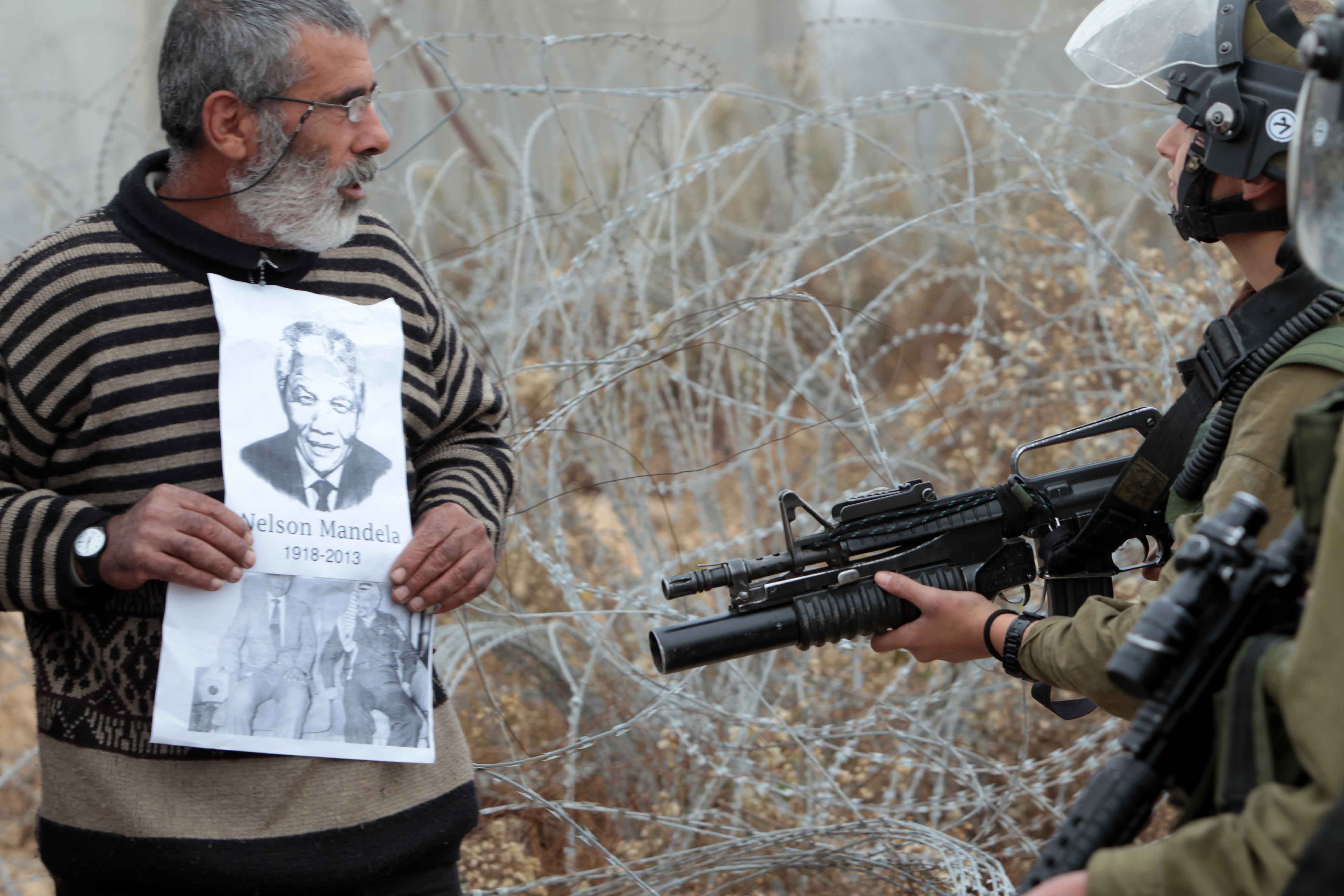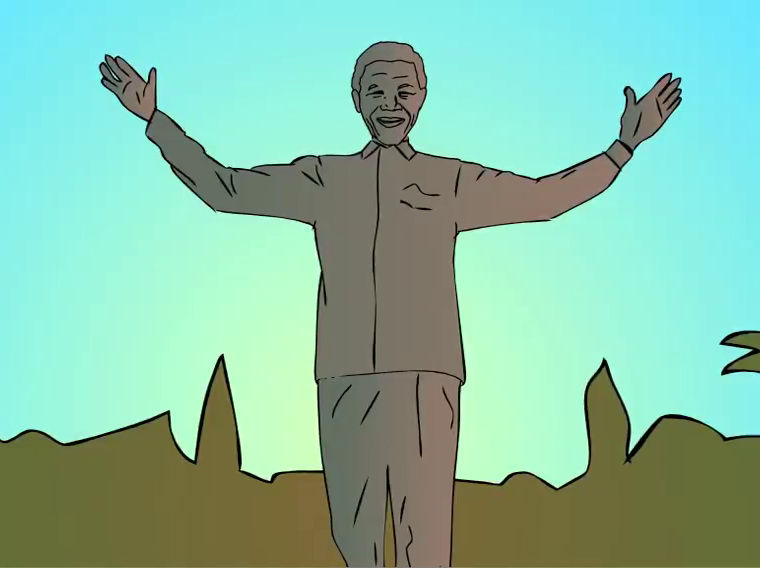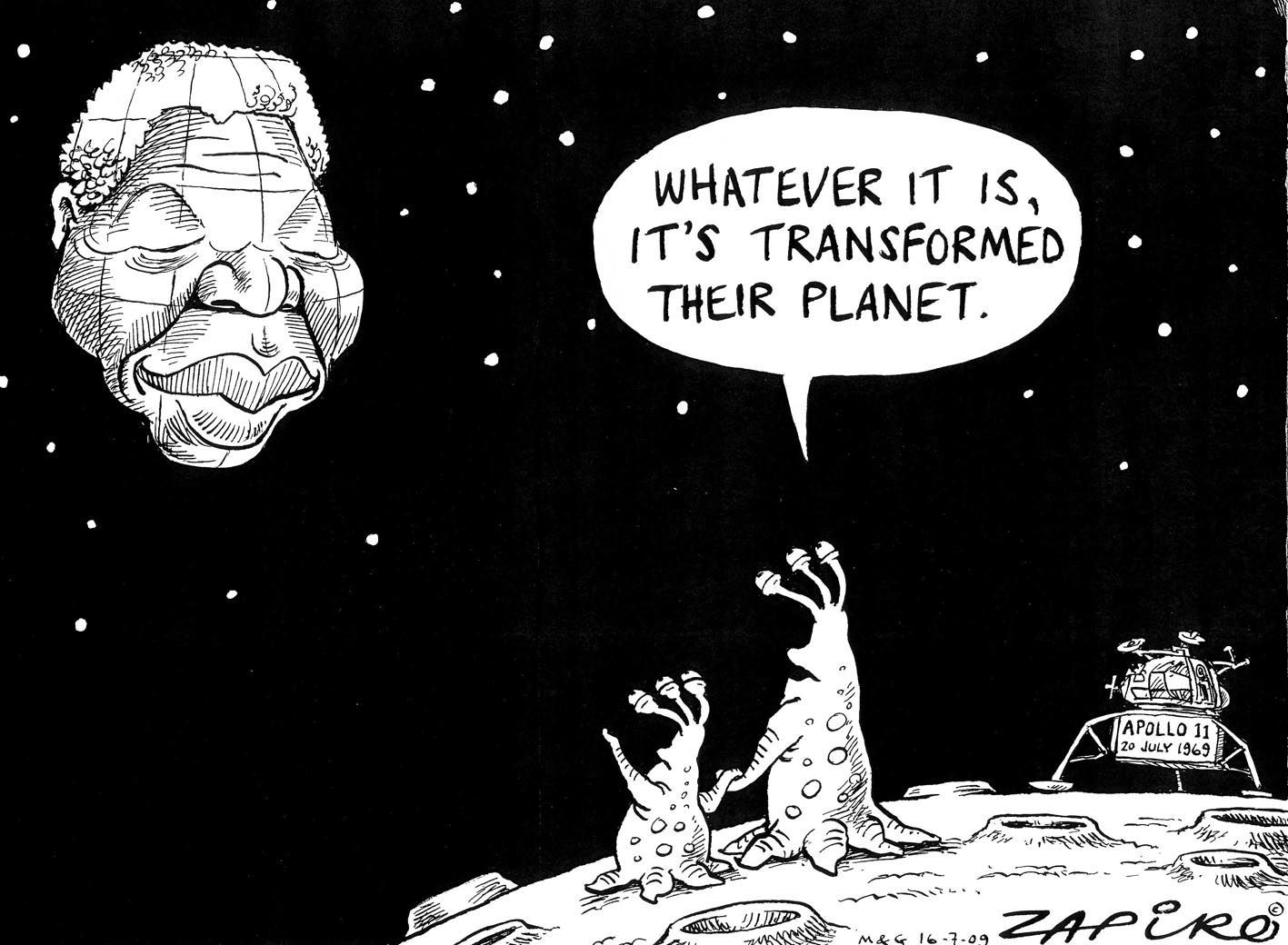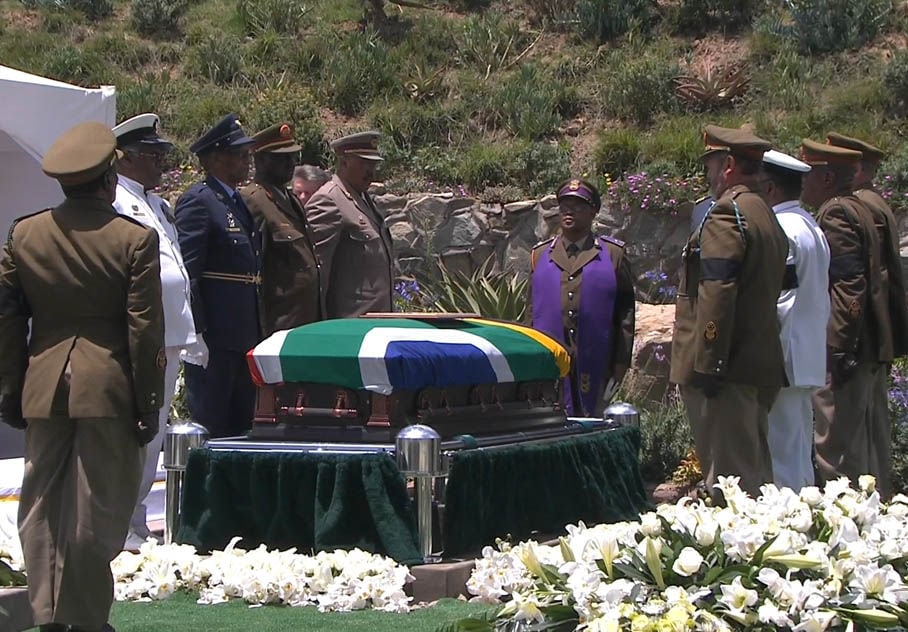
The world pays tribute to Mandela (slideshow)
As South Africans come to terms with the loss of former president Nelson Mandela, the rest of the world bids farewell to Madiba.

Pimples: Saving Madiba's rabbit (video)
Gwede, Mac and Blade try their best to stop the rabbit from whispering in Mandela's ear. But the elusive animal has some tricks up its sleeve.

Zapiro's best Madiba cartoons (slideshow)
From his toughest moments to his most triumphant, Madiba has been an inspiration. Here are some of our favourite Zapiro cartoons about him from 1994 to 2013.

Mandela: SA's greatest son laid to rest (slideshow)
The world watched as Nelson Mandela was finally laid to rest in his hometown of Qunu following a dignified and moving funeral ceremony on Sunday.
Higher than Hope: The authorised biography of Nelson Mandela by Fatima Meer (Madiba, R34,99)
Publication of this book could not be more opportune. Nelson Mandela has been released, and for the first time for almost 30 years it is permissible to publish recent photographs of him.
But after three decades of imprisonment what is Mandela like as a man? Has he been scarred?
Meer's book goes a long way to providing the answers.
The first biography of the imprisoned African National Congress leader was Mary Benson's Nelson Mandela, published by Penguin in 1986, updated last year, and presently being updated again.
Meer's biography was first published in 1988 by Skotaville Publishers, Johannesburg. In its present form it is substantially updated (the 1988 book was a poor effort).
According to Meer, Mandela wrote an autobiography in the late 1970s.
"He smuggled out one copy for publication, and concealed the other in an empty pipe under concrete. One day work began there; the concrete and pipe were smashed, and the original copy of the manuscript lost in the debris."
It was reported recently that Mandela has no knowledge of the whereabouts of the copy that was smuggled out.
In a foreword, Winnie Mandela writes that "Not only did Mandela request Fatima to undertake this task (as authorised biography), he wrote to her and asked me to pursue her to get down to it and I did."
She warns though that the biography is not complete, because telling the full story of Mandela's underground days (in the late 1950s and early 1960s) would expose large number of our people to state harassment and persecution".
Meer, a sociologist at Natal University, and her husband Ismail were both anti-apartheid activists and close friends of Mandela.
Meer offers her book as an addition to Mary Benson's "pioneering work", but notes: "There can be no definitive biography without full personal interviews with him."
Nevertheless, Meer interviewed Mandela for 18 hours at Victor Verster Prison, he allowed her to publish his letters, presented her with a neat 39-page folio of amendments and additions, and subjected the first edition to meticulous reading and correction.
Meer's biography is no great literary achievement. It has a simple chronological structure, lacks an index, includes trivia, and excludes some important material. It is also pure hagiolatry.
Nevertheless, it abounds in original material (letters, interviews, etc) and in its disorganised way it tells us all we need to know about Mandela.
Just before his arrest in 1962, I was taken to meet him in a flat in Hillbrow, when he was on the run. He was remarkably relaxed and affable. I had seen him in action at political meetings, of course, but he was still something of an enigma to me.
After reading Meer's book, he is no longer one, and the answer to the question whether he has been scarred by his experience is -- quite the contrary.
From the moment he set foot inside prison, Mandela knew that the struggle he faced was not to let prison degrade him. The result was that the opposite happened; he kept raising his standards, deepening his humanity.
Meer relates that be would not allow his fellow prisoners to kill crickets that had disturbed their sleep. He scooped them up, carefully, one by one, and ejected them through the barred window. It is like a parable.
I hope I have not created the impression that Mandela is a saintly figure, striding through the years. As Meer notes, he was "extremely attractive to women, and he was easily tempted by them".
He married Evelyn, Walter Sisulu's cousin, in 1944, had four children, separated from her in 1956, met Winnie in 1957 and married her a year later. During his marriage to Evelyn, "he probably did not believe a passing liaison would place it (the marriage) in jeopardy".
A few weeks ago, the Washington Post interviewed Mandela's daughter Maki, now 35 and living in the United States. It was a sad account of a daughter who had never seen her father long enough to establish a daughter-father relationship with him.
Politically, too, Mandela had his wayward moments. When he helped rejuvenate the ANCs Youth League in the mid-1940s, he was prominent among those who resented the influence of whites, Indians and communists in the ANC. But he grew out of these attitudes.
This comes through powerfully in the book: the ever-widening vision. Many revolutionary leaders have been purists, forever narrowing the circle of their ideas and relationships.
Mandela took the opposite course, extending both his political views and the range of his political relationships. It is sheer joy to come across an open mind in politics.
According to Meer, Mandela formed a friendship with Chief Mangosuthu Buthelezi that "survives to this day". Similarly, he formed a friendship in prison with Dr Neville Alexander, an ideological "enemy" of the ANC.
Some township radicals would not see this as a virtue in a revolutionary leader and Mandela can expect trouble from them. Even among Mandela's close associates there are faint hearts who warn journalists not to describe the Great Man as a "moderate" or a "pragmatist', because these words are the kiss of death.
Foreign Minister Pik Botha, of all people, had an answer to this. He said Afrikaner leaders had endured the "gut-wrenching" experience of being booed and reviled in the Afrikaner farming heartlands in their pursuit of reform, and ANC leaders would have to undergo a similar ordeal.
Meer believes that Mandela "is the best person South Africa has to help the country out of the present quagmire of human and material bankruptcy". It is difficult to disagree with her.
One wonders whether while South Africans realise how lucky they are to have someone like
Mandela emerging at this critical hour to try to save them from their follies?
Nobody needs to be reminded of Mandela's famous statement from the dock in the 1956-59 treason trial (in which he was Accused No 1). Meer devotes 24 pages to the text.
But there was another exchange, during the prosecution's examination of Mandela, that is almost piquant in its relevance today.
The prosecutor had asked Mandela what his attitude was toward incremental reform and Mandela replied: "... If the government said, 'We think that the Europeans at present are not ready for a type of government where there might be domination by non-Europeans, we think we should give you 60 seats, the Africans to elect 60 Africans to represent them in parliament; we will leave the matter over for five years and we will review it at the end of five years.'
In my view that would have been a victory, my Lords; we would have taken a significant step towards the attainment of universal adult suffrage for Africans, and we would then for the five years, say, suspend civil disobedience, we won't have any stay-at-homes, and we will then devote the intervening period for the purpose of educating the country, the Europeans ...
"I'd say we should accept it, but of course I would not abandon fire demands for are extension of the universal franchise to all Africans. That's how I see it, my Lords.
Then at the end of the five-year period we will have discussions and if the government says, 'We will give you again 40 more seats', I might say that that is quite sufficient.
Let's accept it and still demand that the franchise should be extended, but for the agreement period we should suspend civil disobedience; no stay-at-homes. In that way we would eventually be able to get everything we want; we shall have our people's democracy, my Lords."
If Mandela repeated this offer today would the whites accept it -- 30 years later?
Many whites might be tempted, but meanwhile a new generation has grown up in the black townships, the dragon's teeth of apartheid, who would be outraged at the mere idea. What wasted years.
One final anecdote needs to be recounted. It concerns Mandela's visit abroad in 1962 (he slipped illegally out of South Africa). Meer relates the occasion, but Mandela, it must be remembered, vetted the book.
"London was exciting: the Thames, Westminster Abbey, the Houses of Parliament, Big Ben; his responses were mixed. So much of his education was related to British history and symbols that he experienced a sense of identity; but there was simultaneous recoil against the imperialism of the colonies that had demeaned and brutalized people.
He saw a reaffirmation of that imperialism in its inherent racism in the statue of General Smuts prestigiously appointed near Westminster Abbey. But as the Empire dimmed and disappeared, so his rancour slackened and Nelson was ready to forgive and embrace London as part of his international heritage."
What lies ahead now for the Great Reconciler? How many South Africans will join him in his mission of reconciliation? Or have the wounds of 42 years of apartheid strife cut too deep in the townships?

